By Tom Powell
ALORA is much more than another white-washed, sleepy Andalucian pueblo.
Despite keeping its fascinating history to itself with unwarranted modesty, this town has blossomed into a hive of cultural activity.
Marked out by its stunning Arabic castle atop Cerro de las Torres hill, the sprawling streets are brought to life through Moroccan and Roman influences before them.
However the castle is even older and was originally built by Phoenicians, before being expanded under Roman rule. And later destroyed by Visigoths in the fifth century before the Moors finally came and rebuilt it.
It is a wonderful place to visit – if you can get in – and the Muslim minaret is still clearly visible today, protruding defiantly from the elegant and immaculately preserved castle.
Local history expert and museum worker, Maria Jose, gave me an insightful tour of the castle and its chapel, built in 1462.
There is a particularly well-preserved oriental arch, a fantastic watch-tower and a multitude of ruins that quickly set the imagination running.
“You can see evidence of all the different ages of the castle, it is so interesting and such a shame that so few people come and see it,” she said.
It is true that the castle is generally not open to the public, despite an expensive overhaul some years ago.
Now, however, a local tour operator Kora Buggel, from Berlin, is hoping to change that.
She can organise tours of the castle and is trying to put on an event with a market and concert to promote this wonderful piece of Alora’s history.
Whether open or not, the view from outside the castle walls down the Guadalhorce valley is very spectacular. Stretching across endless olive tree plantations, it is dissected by the river itself, roads, and clustered hamlets.
A short walk down narrow traditional streets leads to the town’s lowest-lying square. Here stands the impressive 17th century Catholic church of La Encarnacion, which somehow appears to be even larger on the inside.
Adjoining the church is the municipal museum, complete with ancient pottery, historical displays and intense mustiness.
It is a Mudejar construction dating from the 16th century and supported by stone pillars and columns.
As if by fate, some of the pottery on display was actually found on the site of Kora’s current home, in the countryside below the castle.
Unfortunately, the information is only in Spanish at the moment. Even more reason for the Kora Travel team to launch their new Alora tours.
“Alora is such a wonderful town, there is so much culture to see in the artists, history and of course, the best food in the region is here,” she explained.
Of the numerous town feria’s October’s celebrating the town’s ‘sopa perota’ is the most famous.
Each ‘barriada’ cooks its version – a delicious thick soup made from local vegetables and bread – in an enormous stone pot, and then dishes it out free for all to sample.
There is also a handicraft fair at the same time, showcasing the best of Alora’s artists and the oriental influences.
Hidden right in the heart of the town is an old molino, where olive oil was traditionally produced but it is now used for the occasional concert.
Various small museums and bars have sprung up in the centre since the turn of the century, as this town continues its legacy as one of the most important settlements in the Guadalhorce valley.
It is certainly a fairly bustling place, much busier than I had imagined.
One of the highlights was the small bodega belonging to José Miguel Pérez Hidalgo produces a range of wines from the Guadalhorce valley’s vineyards, and offers tasting sessions to organised groups. The wine is bottled by hand and sold in restaurants across Malaga province.
Another interesting place to live is the railway station area below the castle by the river.
However it was here, just two years ago, where the houses were struck by a terrible flood, killing livestock and destroying homes.
From the castle it is easy to see where the river ripped apart a bridge, separating Barriada Estacion from neighbouring Barriada del Puente.
David McGovern, owner of Manhattan bar opposite Alora train station, recalls the water flooding all of the surrounding buildings, reaching metres high.
“It was awful, people lost all of their possessions and were left homeless for 18 months,” he said.
“I gave my Nike trainers to a man who lives just across the river from us, and he’s still wearing them now!”
And Manhattan, despite at first appearing slightly out of place in rural Andalucia, is undeniably popular with both expats and locals.
But after a night spent extremely comfortably with friendly hosts, hearty food and a relaxed atmosphere, it became clear to me why Manhattan is so popular.
The building used to be a warehouse for olives, lemons and oranges, with train tracks coming right up to its entrance for loading.
And after opening up as an American diner and hotel three years ago, Manhattan continues to be as important to the local community, both by employing locals and hosting their parties.
“I love it here, everyone in the town knows us, even the local police and Mayor come down here for parties,” said David.
And with trains running every hour from Malaga, it’s easily accessible. Across the trainline are some beautiful, large merchant’s houses.
And one of these – which has been converted into a bed and breakfast – will house Kora Travel’s Alora trippers for a night.
And they will be treated to one of Alora’s most stunning sites. The castle, lit up like a halo, is utterly alluring at night… A sight not to be missed.

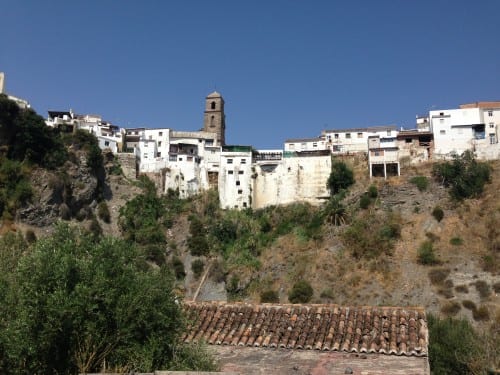

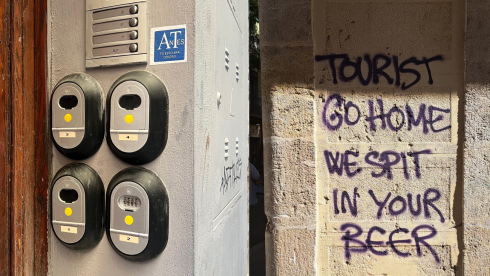


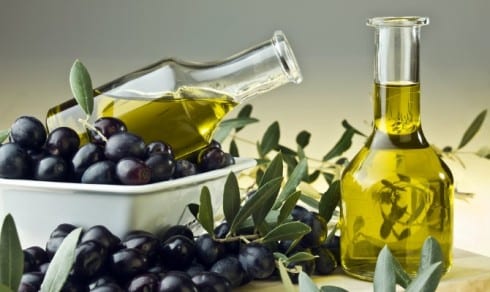


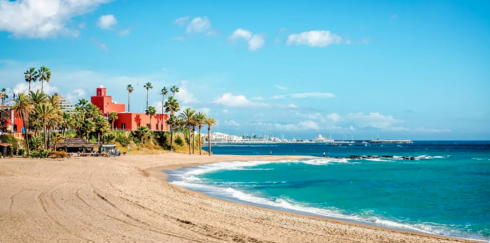

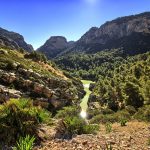
Having just returned from a week in Alora I can attest to the hidden delights of the town. As part of an English amateur orchestra we stayed in Alora and gave three concerts, playing alongside the Banda de Musica de Alora who made us very welcome. The town is a vibrant commercial centre with a fine modern theatre, and we were also given a tour of the castle and the historic old town, with characteristic narrow streets and traditional Spanish architecture. We were entertained with music, and also late-night wine tasting with tapas at the winery. We have already resolved to return!